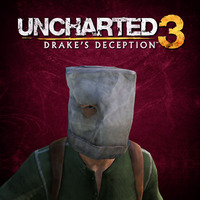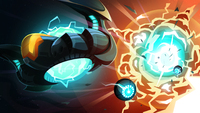Items
In item set
Press and Marketing Materials
-
 Trauma Center: New Blood Trauma Center: New Blood is a simulation video game developed by Atlus for the Wii. The third entry in the Trauma Center series, the game was published in North America in 2007 by Atlus, and in other regions in 2008 by Atlus (Japan) and Nintendo (Europe and Australia). The story follows doctors Markus Vaughn and Valerie Blaylock, each holding a supernatural ability called the Healing Touch, as they face a man-made parasitic virus called Stigma. Gameplay combines surgical simulation with a story told as a visual novel, with operations controlled exclusively using the Wii Remote and Nunchuk. Development of New Blood began following the completion of Trauma Center: Second Opinion. The North American setting and overall narrative was influenced by the staff of Atlus USA, based on the series' overseas success. Development was supported by Media.Vision. While using many of the systems created for Second Opinion, the staff focused on adding full voice acting and multiplayer. The game met with generally positive reviews; praise was given to its gameplay and cooperative function, but reactions to the story were mixed, and several faulted its high difficulty. It was also described as a commercial success, selling 300,000 copies in North America.
Trauma Center: New Blood Trauma Center: New Blood is a simulation video game developed by Atlus for the Wii. The third entry in the Trauma Center series, the game was published in North America in 2007 by Atlus, and in other regions in 2008 by Atlus (Japan) and Nintendo (Europe and Australia). The story follows doctors Markus Vaughn and Valerie Blaylock, each holding a supernatural ability called the Healing Touch, as they face a man-made parasitic virus called Stigma. Gameplay combines surgical simulation with a story told as a visual novel, with operations controlled exclusively using the Wii Remote and Nunchuk. Development of New Blood began following the completion of Trauma Center: Second Opinion. The North American setting and overall narrative was influenced by the staff of Atlus USA, based on the series' overseas success. Development was supported by Media.Vision. While using many of the systems created for Second Opinion, the staff focused on adding full voice acting and multiplayer. The game met with generally positive reviews; praise was given to its gameplay and cooperative function, but reactions to the story were mixed, and several faulted its high difficulty. It was also described as a commercial success, selling 300,000 copies in North America. -
 Trauma Center: Second Opinion Trauma Center: Second Opinion is a simulation video game developed by Atlus for the Wii. The second entry in the Trauma Center series, Second Opinion is a remake of the Nintendo DS title Trauma Center: Under the Knife (2005). The game was released in North America and Japan in 2006 by Atlus as a console launch title, and in other regions in 2007 by Nintendo. Set in a near future where medical science can cure previously incurable diseases, the story follows young surgeon Derek Stiles as he uses his mystical "Healing Touch" to treat a new disease dubbed GUILT. Second Opinion expands on the original narrative through the perspective of Naomi Kimishima, another doctor with the Healing Touch. Gameplay combines surgical simulation with a story told as a visual novel, with operations and control options reworked for the Wii hardware. The game began development in early 2006. Production was stressful due to a small team and tight development period. The character Naomi was added to help set the game apart from the Nintendo DS original. The localization was done by Atlus USA, who focused on tightening the original script and merging it with the new narrative. The game was positively reviewed by journalists, who praised its implementation of the Wii control scheme. It was also a commercial success, selling over 400,000 units overseas.
Trauma Center: Second Opinion Trauma Center: Second Opinion is a simulation video game developed by Atlus for the Wii. The second entry in the Trauma Center series, Second Opinion is a remake of the Nintendo DS title Trauma Center: Under the Knife (2005). The game was released in North America and Japan in 2006 by Atlus as a console launch title, and in other regions in 2007 by Nintendo. Set in a near future where medical science can cure previously incurable diseases, the story follows young surgeon Derek Stiles as he uses his mystical "Healing Touch" to treat a new disease dubbed GUILT. Second Opinion expands on the original narrative through the perspective of Naomi Kimishima, another doctor with the Healing Touch. Gameplay combines surgical simulation with a story told as a visual novel, with operations and control options reworked for the Wii hardware. The game began development in early 2006. Production was stressful due to a small team and tight development period. The character Naomi was added to help set the game apart from the Nintendo DS original. The localization was done by Atlus USA, who focused on tightening the original script and merging it with the new narrative. The game was positively reviewed by journalists, who praised its implementation of the Wii control scheme. It was also a commercial success, selling over 400,000 units overseas. -
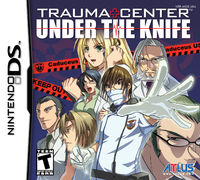 Trauma Center: Under the Knife Trauma Center: Under the Knife is a simulation video game developed by Atlus for the Nintendo DS. The debut entry in the Trauma Center series, it was published in Japan and North America by Atlus in 2005, and by Nintendo in Europe in 2006. Set in a near future where medical science can cure previously incurable diseases, the world's population panics when a new manmade disease called GUILT begins to spread. Doctor Derek Stiles, a surgeon possessing a mystical "Healing Touch", works with the medical research organization Caduceus to find a cure to GUILT. The gameplay combines surgery-based simulation relying on the DS's touchscreen controls with a story told as a visual novel. Designed to take advantage of the DS's control options after planned development for earlier consoles stalled due to inadequate hardware, development lasted just over a year. Its early inspirations included Western television series ER and Chicago Hope, with science fiction elements incorporated during a later stage. Development proved challenging for the staff, who were veterans of the Megami Tensei franchise and had little experience with genres outside role-playing. The game was positively reviewed by journalists, who praised the title for its use of the DS controls while criticising its difficulty spikes and repetition. While a commercial disappointment in Japan, it sold beyond expectations in both North America and Europe, boosting Atlus' profits for that year. A remake for the Wii, Trauma Center: Second Opinion, released the following year. A DS sequel, Under the Knife 2, was released in 2008.
Trauma Center: Under the Knife Trauma Center: Under the Knife is a simulation video game developed by Atlus for the Nintendo DS. The debut entry in the Trauma Center series, it was published in Japan and North America by Atlus in 2005, and by Nintendo in Europe in 2006. Set in a near future where medical science can cure previously incurable diseases, the world's population panics when a new manmade disease called GUILT begins to spread. Doctor Derek Stiles, a surgeon possessing a mystical "Healing Touch", works with the medical research organization Caduceus to find a cure to GUILT. The gameplay combines surgery-based simulation relying on the DS's touchscreen controls with a story told as a visual novel. Designed to take advantage of the DS's control options after planned development for earlier consoles stalled due to inadequate hardware, development lasted just over a year. Its early inspirations included Western television series ER and Chicago Hope, with science fiction elements incorporated during a later stage. Development proved challenging for the staff, who were veterans of the Megami Tensei franchise and had little experience with genres outside role-playing. The game was positively reviewed by journalists, who praised the title for its use of the DS controls while criticising its difficulty spikes and repetition. While a commercial disappointment in Japan, it sold beyond expectations in both North America and Europe, boosting Atlus' profits for that year. A remake for the Wii, Trauma Center: Second Opinion, released the following year. A DS sequel, Under the Knife 2, was released in 2008. -
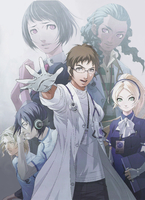 Trauma Center: Under the Knife 2 Trauma Center: Under the Knife 2 is a 2008 simulation video game developed by Vanguard for the Nintendo DS (DS), and published by Atlus. It is the fourth game in the Trauma Center series and a direct sequel to Trauma Center: Under the Knife (2005). Set three years after the events of Under the Knife, the plot follows protagonist Derek Stiles as he confronts not only the revival of terrorist organisation Delphi and its GUILT disease, but personal insecurities and corporate manipulation. The gameplay combines surgical simulation relying on the DS's touchscreen controls with a story told as a visual novel. Under the Knife 2 was developed as a true mechanical and narrative sequel to the original game, using the same controls and gameplay style in contrast to the altered style of other games on the Wii. Daisuke Kanada and Masayuki Doi returned as director and character designer, alongside new co-director Hirokazu Toyama and composers Manabu Namiki and Noriyuki Kamikura. Reception of the game was generally positive, but many journalists noted a lack of innovation while praising its improvements over the original game. It also met with low sales in Japan and North America.
Trauma Center: Under the Knife 2 Trauma Center: Under the Knife 2 is a 2008 simulation video game developed by Vanguard for the Nintendo DS (DS), and published by Atlus. It is the fourth game in the Trauma Center series and a direct sequel to Trauma Center: Under the Knife (2005). Set three years after the events of Under the Knife, the plot follows protagonist Derek Stiles as he confronts not only the revival of terrorist organisation Delphi and its GUILT disease, but personal insecurities and corporate manipulation. The gameplay combines surgical simulation relying on the DS's touchscreen controls with a story told as a visual novel. Under the Knife 2 was developed as a true mechanical and narrative sequel to the original game, using the same controls and gameplay style in contrast to the altered style of other games on the Wii. Daisuke Kanada and Masayuki Doi returned as director and character designer, alongside new co-director Hirokazu Toyama and composers Manabu Namiki and Noriyuki Kamikura. Reception of the game was generally positive, but many journalists noted a lack of innovation while praising its improvements over the original game. It also met with low sales in Japan and North America. -
 Trauma Team Trauma Team is a 2010 simulation video game developed and published by Atlus for the Wii. It is the fifth and current final entry in the Trauma Center series. The narrative of Trauma Team follows six protagonists who operate in different sectors of the medical profession, and their eventual united conflict with a virulent infection dubbed the "Rosalia virus". The gameplay combines medical simulation with visual novel-style storytelling through motion comic cutscenes. The different storylines focus on simplified versions of surgery, emergency medicine, endoscopy, diagnosis, orthopedics and forensic medicine. Beginning preproduction in late 2007 following the completion of Trauma Center: New Blood, the development team's aim was for Trauma Team to be both a "conglomeration" of the series and something different. The wish for variety after multiple titles with similar gameplay resulted in the different playable medical professions, which each required a dedicated designer. The story was influenced by the 2009 swine flu pandemic, and reduced the usage of supernatural and science fiction elements prominent in earlier entries to create a more grounded narrative. While it met with low sales, reception was generally positive. Critics praised the narrative's grounded tone, presentation, and greater variety compared to earlier Trauma Center games. Criticism focused on the control and pacing issues of some gameplay modes. A pilot episode for a live-action series of the same name was produced, but the series was not taken up and the pilot received no official release.
Trauma Team Trauma Team is a 2010 simulation video game developed and published by Atlus for the Wii. It is the fifth and current final entry in the Trauma Center series. The narrative of Trauma Team follows six protagonists who operate in different sectors of the medical profession, and their eventual united conflict with a virulent infection dubbed the "Rosalia virus". The gameplay combines medical simulation with visual novel-style storytelling through motion comic cutscenes. The different storylines focus on simplified versions of surgery, emergency medicine, endoscopy, diagnosis, orthopedics and forensic medicine. Beginning preproduction in late 2007 following the completion of Trauma Center: New Blood, the development team's aim was for Trauma Team to be both a "conglomeration" of the series and something different. The wish for variety after multiple titles with similar gameplay resulted in the different playable medical professions, which each required a dedicated designer. The story was influenced by the 2009 swine flu pandemic, and reduced the usage of supernatural and science fiction elements prominent in earlier entries to create a more grounded narrative. While it met with low sales, reception was generally positive. Critics praised the narrative's grounded tone, presentation, and greater variety compared to earlier Trauma Center games. Criticism focused on the control and pacing issues of some gameplay modes. A pilot episode for a live-action series of the same name was produced, but the series was not taken up and the pilot received no official release. -
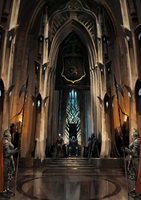 Trinity: Souls of Zill O'll The country Rostorl has lost a war against Dyneskal Empire, the most powerful nation of the Vyashion continent. Balor, the emperor of Dyneskal, aims to expand his domain even more. However, he is told that he will die by the hand of his own offspring. He orchestrates the death of his own son, but his grandson Areus is saved by his elven mother. Areus grows up and swears revenge against his grandfather, attempting to become the country's most powerful gladiator to achieve his goal.
Trinity: Souls of Zill O'll The country Rostorl has lost a war against Dyneskal Empire, the most powerful nation of the Vyashion continent. Balor, the emperor of Dyneskal, aims to expand his domain even more. However, he is told that he will die by the hand of his own offspring. He orchestrates the death of his own son, but his grandson Areus is saved by his elven mother. Areus grows up and swears revenge against his grandfather, attempting to become the country's most powerful gladiator to achieve his goal. -
 Vampire: The Masquerade – Redemption Vampire: The Masquerade – Redemption is a 2000 role-playing video game developed by Nihilistic Software and published by Activision. The game is based on White Wolf Publishing's tabletop role-playing game Vampire: The Masquerade, a part of the larger World of Darkness series. It follows Christof Romuald, a 12th-century French crusader who is killed and revived as a vampire. The game depicts Christof's centuries-long journey from the Golden Ages of 12th century Prague and Vienna to late-20th century London and New York City in search of his humanity and his kidnapped love, the nun Anezka. Redemption is presented in the first- and third-person perspectives. The player controls Christof and up to three allies through a linear structure, providing the player with missions to progress through a set narrative. Certain actions committed by Christof throughout the game can raise or lower his humanity, affecting which of the game's three endings the player receives. As a vampire, Christof is imbued with a variety of abilities and powers that can be used to combat or avoid enemies and obstacles. Use of these abilities drains Christof's supply of blood which can be replenished by drinking from enemies or innocents. It includes multiplayer gameplay called "Storyteller", which allows one player to create a narrative for a group of players with the ability to modify the game dynamically in reaction to the players' actions. Founded in March 1998, Nihilistic's twelve-man team began development of Redemption the following month as their first game. It took the team two years to complete on a budget of US$1.8 million. The team relied on eight outside contractors to provide elements that the team could not supply, such as music and artwork. The game's development was difficult: late changes to software forced the developers to abandon completed code and assets; a focus on high-quality graphics and sound meant that the game ran poorly on some computer systems; and the original scope of the game exceeded the game's schedule and budget, forcing the team to cancel planned features. Redemption was released for Microsoft Windows in June 2000, with a Mac OS version following in November 2001. The game received a mixed critical response; reviewers praised its graphics and its multiplayer functionality but were polarized by the quality of the story and combat. It received the 1999 Game Critics Awards for Best Role-Playing game. It was successful enough to merit the production of the indirect sequel Vampire: The Masquerade – Bloodlines (2004), which takes place in the same fictional universe.
Vampire: The Masquerade – Redemption Vampire: The Masquerade – Redemption is a 2000 role-playing video game developed by Nihilistic Software and published by Activision. The game is based on White Wolf Publishing's tabletop role-playing game Vampire: The Masquerade, a part of the larger World of Darkness series. It follows Christof Romuald, a 12th-century French crusader who is killed and revived as a vampire. The game depicts Christof's centuries-long journey from the Golden Ages of 12th century Prague and Vienna to late-20th century London and New York City in search of his humanity and his kidnapped love, the nun Anezka. Redemption is presented in the first- and third-person perspectives. The player controls Christof and up to three allies through a linear structure, providing the player with missions to progress through a set narrative. Certain actions committed by Christof throughout the game can raise or lower his humanity, affecting which of the game's three endings the player receives. As a vampire, Christof is imbued with a variety of abilities and powers that can be used to combat or avoid enemies and obstacles. Use of these abilities drains Christof's supply of blood which can be replenished by drinking from enemies or innocents. It includes multiplayer gameplay called "Storyteller", which allows one player to create a narrative for a group of players with the ability to modify the game dynamically in reaction to the players' actions. Founded in March 1998, Nihilistic's twelve-man team began development of Redemption the following month as their first game. It took the team two years to complete on a budget of US$1.8 million. The team relied on eight outside contractors to provide elements that the team could not supply, such as music and artwork. The game's development was difficult: late changes to software forced the developers to abandon completed code and assets; a focus on high-quality graphics and sound meant that the game ran poorly on some computer systems; and the original scope of the game exceeded the game's schedule and budget, forcing the team to cancel planned features. Redemption was released for Microsoft Windows in June 2000, with a Mac OS version following in November 2001. The game received a mixed critical response; reviewers praised its graphics and its multiplayer functionality but were polarized by the quality of the story and combat. It received the 1999 Game Critics Awards for Best Role-Playing game. It was successful enough to merit the production of the indirect sequel Vampire: The Masquerade – Bloodlines (2004), which takes place in the same fictional universe. -
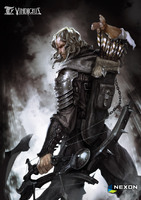 Vindictus Vindictus for PC
Vindictus Vindictus for PC -
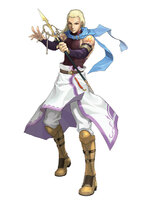 War of Angels War of Angels was a free-to-play fantasy MMORPG from NJ Interactive and Neowiz Games. Players can choose between the game's two factions and take on quests, engage in PvE and PvP combat, delve dungeons, raise pets, and more.
War of Angels War of Angels was a free-to-play fantasy MMORPG from NJ Interactive and Neowiz Games. Players can choose between the game's two factions and take on quests, engage in PvE and PvP combat, delve dungeons, raise pets, and more. -
 WarCraft II: Tides of Darkness WarCraft II: Tides of Darkness is a fantasy themed real-time strategy game and sequel to WarCraft: Orcs & Humans set on the world of Azeroth. With the conquest of the kingdom of Azeroth in the first war, the orcs are now preparing for an invasion of Lordaeron and conquer the remaining human, dwarven and elvisch realms. In an effort to counter this invasion the humans, elves and dwarves formed an alliance in the hope to avert the same fate the kingdom of Azeroth met.
WarCraft II: Tides of Darkness WarCraft II: Tides of Darkness is a fantasy themed real-time strategy game and sequel to WarCraft: Orcs & Humans set on the world of Azeroth. With the conquest of the kingdom of Azeroth in the first war, the orcs are now preparing for an invasion of Lordaeron and conquer the remaining human, dwarven and elvisch realms. In an effort to counter this invasion the humans, elves and dwarves formed an alliance in the hope to avert the same fate the kingdom of Azeroth met. -
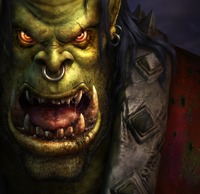 WarCraft III: Reign of Chaos WarCraft III: Reign of Chaos is a fantasy themed real-time strategy game with role playing elements set on the world of Azeroth. After the defeat of Orcish horde at the hand of the Alliance in the second war and the destruction of the Dark portal, the remaining orcs were rounded up and put in internment camps. The game starts with the Orcs being freed by a new warchief from their internment camps and leave for a new continent across the sea. The Humans are troubled by a mysterious disease that turns people into living dead. Meanwhile the undead are preparing for a way to let their Demon masters enter the world of Azeroth.
WarCraft III: Reign of Chaos WarCraft III: Reign of Chaos is a fantasy themed real-time strategy game with role playing elements set on the world of Azeroth. After the defeat of Orcish horde at the hand of the Alliance in the second war and the destruction of the Dark portal, the remaining orcs were rounded up and put in internment camps. The game starts with the Orcs being freed by a new warchief from their internment camps and leave for a new continent across the sea. The Humans are troubled by a mysterious disease that turns people into living dead. Meanwhile the undead are preparing for a way to let their Demon masters enter the world of Azeroth. -
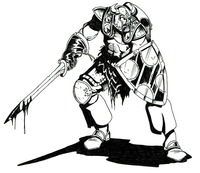 WarCraft: Orcs & Humans WarCraft: Orcs & Humans is the first real-time fantasy strategy game from Blizzard Entertainment Inc. By playing either the Humans or the Orcs in this saga, two separate story lines evolve with 12 scenarios per side telling the tale of the battle for Azeroth. Players must mine gold and chop wood in order to construct buildings and create new units. From swords to sorcery, all the elements of classic fantasy are here to explore: rich forests, dark dungeons and bubbling swamps await the stalwart troops amassed to fight for dominance. Command many unique armies and creatures including Knights, Archers, Clerics, Warlocks, Daemons, Elementals, and Necromancers who are able to raise the dead.
WarCraft: Orcs & Humans WarCraft: Orcs & Humans is the first real-time fantasy strategy game from Blizzard Entertainment Inc. By playing either the Humans or the Orcs in this saga, two separate story lines evolve with 12 scenarios per side telling the tale of the battle for Azeroth. Players must mine gold and chop wood in order to construct buildings and create new units. From swords to sorcery, all the elements of classic fantasy are here to explore: rich forests, dark dungeons and bubbling swamps await the stalwart troops amassed to fight for dominance. Command many unique armies and creatures including Knights, Archers, Clerics, Warlocks, Daemons, Elementals, and Necromancers who are able to raise the dead. -
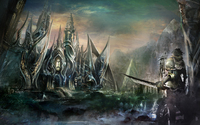 Waren Story Waren Story is an upcoming 3D fantasy MMORPG from Alt1 and GoplayOn. Enriched with visually stunning animation that immerses players in a treacherous world full of monsters, dungeons, and continuously raging battles, Waren Story will seek to provide a spectacular free-to-play fantasy gaming experience. Set on the continent of Waren, players will create heroes with hopes of battling and defeating The Shadow, a mysterious force from Waren’s past, who has returned to bring troubles once again. Players will face off against The Shadow’s nightmarish and fascinating creatures, recruit allies for the war, and fight in deadly PvP battles. Deep character customizations, a variety of special skills, and a long unique list of weapons, armor, and other items will be available. Stay tuned here for more info as it’s released!
Waren Story Waren Story is an upcoming 3D fantasy MMORPG from Alt1 and GoplayOn. Enriched with visually stunning animation that immerses players in a treacherous world full of monsters, dungeons, and continuously raging battles, Waren Story will seek to provide a spectacular free-to-play fantasy gaming experience. Set on the continent of Waren, players will create heroes with hopes of battling and defeating The Shadow, a mysterious force from Waren’s past, who has returned to bring troubles once again. Players will face off against The Shadow’s nightmarish and fascinating creatures, recruit allies for the war, and fight in deadly PvP battles. Deep character customizations, a variety of special skills, and a long unique list of weapons, armor, and other items will be available. Stay tuned here for more info as it’s released! -
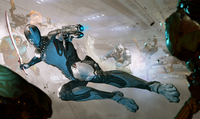 Warframe Warframe is a free-to-play action role-playing third-person shooter multiplayer online game developed and published by Digital Extremes. First released for Windows in March 2013, it was later ported to PlayStation 4 in November 2013, Xbox One in September 2014, Nintendo Switch in November 2018, PlayStation 5 in November 2020, Xbox Series X/S in April 2021, and iOS in February 2024. Support for cross-platform play was released in 2022. Cross-platform save began in December 2023, rolling out in waves to different groups of players before becoming fully available to all players in January 2024. A port for Android is in development. In Warframe, players control members of the Tenno, a race of ancient warriors who have awoken from centuries of suspended animation far into Earth's future to find themselves at war with different factions in the Origin System. The Tenno use their powered Warframes, along with a variety of weapons and abilities, to complete missions. While many of the game's missions use procedurally generated levels, it also includes large open world areas similar to other massively multiplayer online games, as well as some story-specific missions with fixed level design. The game includes elements of shooting and melee games, parkour, and role-playing to allow players to advance their Tenno with improved gear. The game features both player versus environment and player versus player elements. It is supported by microtransactions, allowing players to purchase in-game items with money, while also offering the option to earn them at no cost through grinding. The concept for Warframe originated in 2000 when Digital Extremes began work on a new game titled Dark Sector. At the time, the company had been successful in supporting other developers and publishers but wanted to develop its own game in-house. Dark Sector suffered several delays and was eventually released in 2008, incorporating some of the initial framework but differing significantly from the original plan. By 2012, in the wake of the success of free-to-play games, the developers took their earlier Dark Sector ideas and art assets and incorporated them into a new project, their self-published Warframe. Initially, the growth of Warframe was slow, hindered by moderate critical reviews and low player counts. However, since its release, the game has experienced significant growth. It is one of Digital Extremes' most successful titles, reaching nearly 50 million registered players by 2019.
Warframe Warframe is a free-to-play action role-playing third-person shooter multiplayer online game developed and published by Digital Extremes. First released for Windows in March 2013, it was later ported to PlayStation 4 in November 2013, Xbox One in September 2014, Nintendo Switch in November 2018, PlayStation 5 in November 2020, Xbox Series X/S in April 2021, and iOS in February 2024. Support for cross-platform play was released in 2022. Cross-platform save began in December 2023, rolling out in waves to different groups of players before becoming fully available to all players in January 2024. A port for Android is in development. In Warframe, players control members of the Tenno, a race of ancient warriors who have awoken from centuries of suspended animation far into Earth's future to find themselves at war with different factions in the Origin System. The Tenno use their powered Warframes, along with a variety of weapons and abilities, to complete missions. While many of the game's missions use procedurally generated levels, it also includes large open world areas similar to other massively multiplayer online games, as well as some story-specific missions with fixed level design. The game includes elements of shooting and melee games, parkour, and role-playing to allow players to advance their Tenno with improved gear. The game features both player versus environment and player versus player elements. It is supported by microtransactions, allowing players to purchase in-game items with money, while also offering the option to earn them at no cost through grinding. The concept for Warframe originated in 2000 when Digital Extremes began work on a new game titled Dark Sector. At the time, the company had been successful in supporting other developers and publishers but wanted to develop its own game in-house. Dark Sector suffered several delays and was eventually released in 2008, incorporating some of the initial framework but differing significantly from the original plan. By 2012, in the wake of the success of free-to-play games, the developers took their earlier Dark Sector ideas and art assets and incorporated them into a new project, their self-published Warframe. Initially, the growth of Warframe was slow, hindered by moderate critical reviews and low player counts. However, since its release, the game has experienced significant growth. It is one of Digital Extremes' most successful titles, reaching nearly 50 million registered players by 2019. -
 We ♥ Katamari We Love Katamari is a 2005 action-puzzle video game developed and published by Namco for the PlayStation 2. It is the sequel to the 2004 sleeper hit Katamari Damacy. The player controls a diminutive character named the Prince as he rolls around an adhesive ball called a "katamari" to collect increasingly larger objects, ranging from coins to pencils to buildings, in order to build stars as ordered by his father, the King of All Cosmos.
We ♥ Katamari We Love Katamari is a 2005 action-puzzle video game developed and published by Namco for the PlayStation 2. It is the sequel to the 2004 sleeper hit Katamari Damacy. The player controls a diminutive character named the Prince as he rolls around an adhesive ball called a "katamari" to collect increasingly larger objects, ranging from coins to pencils to buildings, in order to build stars as ordered by his father, the King of All Cosmos. -
 What Did I Do To Deserve This My Lord!? 2 What Did I Do To Deserve This My Lord!? 2 (formerly known as Holy Invasion Of Privacy, Badman! 2: Time To Tighten Up Security!) is a real-time strategy god game for the PlayStation Portable, sequel to What Did I Do to Deserve This, My Lord?. The game was released in Japan in 2008, and was announced for a North American release during Tokyo Game Show 2009. This release was delayed until May 4, 2010, due to NIS America changing the game's name from Holy Invasion Of Privacy, Badman! 2: Time to Tighten Up Security! to What Did I Do to Deserve This, My Lord!? 2 to avoid conflict with the Batman license. The UMD release includes the first game.
What Did I Do To Deserve This My Lord!? 2 What Did I Do To Deserve This My Lord!? 2 (formerly known as Holy Invasion Of Privacy, Badman! 2: Time To Tighten Up Security!) is a real-time strategy god game for the PlayStation Portable, sequel to What Did I Do to Deserve This, My Lord?. The game was released in Japan in 2008, and was announced for a North American release during Tokyo Game Show 2009. This release was delayed until May 4, 2010, due to NIS America changing the game's name from Holy Invasion Of Privacy, Badman! 2: Time to Tighten Up Security! to What Did I Do to Deserve This, My Lord!? 2 to avoid conflict with the Batman license. The UMD release includes the first game. -
 Wii Play: Motion Wii Play: Motion is a 2011 party video game developed and published by Nintendo for the Wii. The sequel to the 2006 game Wii Play, it was released in North America on June 13, 2011; Europe on June 24; Australia on June 30; and Japan on July 7, 2011. Unlike the original game, which was developed entirely by Nintendo, the twelve minigames were outsourced to numerous developers alongside Nintendo; these included Prope, Vanpool, and Skip Ltd., among others. Wii Play: Motion is bundled with a Wii Remote Plus (red in Europe and black in other regions). The game is the final game in the Wii series to be released on the Wii. The game received mixed reviews from critics upon release, though it was generally considered to be superior to its predecessor.
Wii Play: Motion Wii Play: Motion is a 2011 party video game developed and published by Nintendo for the Wii. The sequel to the 2006 game Wii Play, it was released in North America on June 13, 2011; Europe on June 24; Australia on June 30; and Japan on July 7, 2011. Unlike the original game, which was developed entirely by Nintendo, the twelve minigames were outsourced to numerous developers alongside Nintendo; these included Prope, Vanpool, and Skip Ltd., among others. Wii Play: Motion is bundled with a Wii Remote Plus (red in Europe and black in other regions). The game is the final game in the Wii series to be released on the Wii. The game received mixed reviews from critics upon release, though it was generally considered to be superior to its predecessor. -
 Wildlife: Forest Survival Wildlife: Forest Survival progresses through a treacherous forest setting where players choose from one of four animals and tap into their selected animal's strengths in order to annihilate their prey and escape their predators
Wildlife: Forest Survival Wildlife: Forest Survival progresses through a treacherous forest setting where players choose from one of four animals and tap into their selected animal's strengths in order to annihilate their prey and escape their predators -
 Wipeout 2048 Wipeout 2048 is a 2012 racing video game developed by Studio Liverpool and published by Sony Computer Entertainment for the PlayStation Vita. The ninth instalment of the Wipeout series, it was a launch game for the console. It was also the last game to be developed by Studio Liverpool before its closure as well as the last mainline Wipeout title. As the title implies, Wipeout 2048 is a prequel to the original 1995 Wipeout and is set in the years 2048, 2049, and 2050. The game was designed as a testbed for the PlayStation Vita. Studio Liverpool's feedback on the console's features, including the addition of a rear touchscreen and two separate joysticks, were contributive to the Vita's final design. Wipeout 2048 preserves some technical aspects of its predecessor game Wipeout HD, including downloadable content (DLC), online multiplayer mode, and cross-platform play with PlayStation 3 owners running Wipeout HD. Wipeout 2048 received mainly positive reviews; critics said its graphics and visuals showcased the power of the then-new PlayStation Vita but criticised its long loading times and other technical problems. The game, together with Wipeout HD and its Fury expansion, was remastered for PlayStation 4 and released as Wipeout Omega Collection in 2017.
Wipeout 2048 Wipeout 2048 is a 2012 racing video game developed by Studio Liverpool and published by Sony Computer Entertainment for the PlayStation Vita. The ninth instalment of the Wipeout series, it was a launch game for the console. It was also the last game to be developed by Studio Liverpool before its closure as well as the last mainline Wipeout title. As the title implies, Wipeout 2048 is a prequel to the original 1995 Wipeout and is set in the years 2048, 2049, and 2050. The game was designed as a testbed for the PlayStation Vita. Studio Liverpool's feedback on the console's features, including the addition of a rear touchscreen and two separate joysticks, were contributive to the Vita's final design. Wipeout 2048 preserves some technical aspects of its predecessor game Wipeout HD, including downloadable content (DLC), online multiplayer mode, and cross-platform play with PlayStation 3 owners running Wipeout HD. Wipeout 2048 received mainly positive reviews; critics said its graphics and visuals showcased the power of the then-new PlayStation Vita but criticised its long loading times and other technical problems. The game, together with Wipeout HD and its Fury expansion, was remastered for PlayStation 4 and released as Wipeout Omega Collection in 2017. -
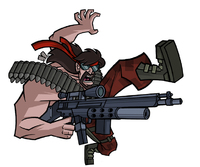 Wolf of the Battlefield: Commando 3 Wolf of the Battlefield: Commando 3 is a 2008 downloadable game developed by Backbone Entertainment for the Xbox 360 and PlayStation 3. It is the second sequel to Capcom's Commando arcade game, following Mercs; "Wolf of the Battlefield" is a translation of the series' original title.
Wolf of the Battlefield: Commando 3 Wolf of the Battlefield: Commando 3 is a 2008 downloadable game developed by Backbone Entertainment for the Xbox 360 and PlayStation 3. It is the second sequel to Capcom's Commando arcade game, following Mercs; "Wolf of the Battlefield" is a translation of the series' original title. -
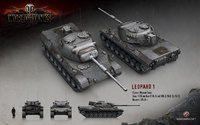 World of Tanks World of Tanks for PC
World of Tanks World of Tanks for PC -
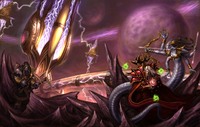 World of WarCraft Trading Card Game The World of WarCraft Trading Card Game, commonly referred to as "the TCG", is a physical collectible card game based upon World of WarCraft. It was announced on 18 August 2005 and was first released in October of 2006 by Upper Deck Entertainment. In March 2010, they lost the license from Blizzard Entertainment and Cryptozoic Entertainment announced the acquisition of the game's license on 24 March 2010. The TCG was produced for nearly seven years, when it was announced on 23 August 2013 that Set 21, Timewalkers: Reign of Fire would be the last set made.The announcement came a week after the closed beta started for the digital card game Hearthstone, a spiritual successor to the TCG which features many of the same characters, abilities and artwork. Unlike most TCGs, the game has a larger focus on multiplayer, having both raids and battlegrounds.
World of WarCraft Trading Card Game The World of WarCraft Trading Card Game, commonly referred to as "the TCG", is a physical collectible card game based upon World of WarCraft. It was announced on 18 August 2005 and was first released in October of 2006 by Upper Deck Entertainment. In March 2010, they lost the license from Blizzard Entertainment and Cryptozoic Entertainment announced the acquisition of the game's license on 24 March 2010. The TCG was produced for nearly seven years, when it was announced on 23 August 2013 that Set 21, Timewalkers: Reign of Fire would be the last set made.The announcement came a week after the closed beta started for the digital card game Hearthstone, a spiritual successor to the TCG which features many of the same characters, abilities and artwork. Unlike most TCGs, the game has a larger focus on multiplayer, having both raids and battlegrounds.
